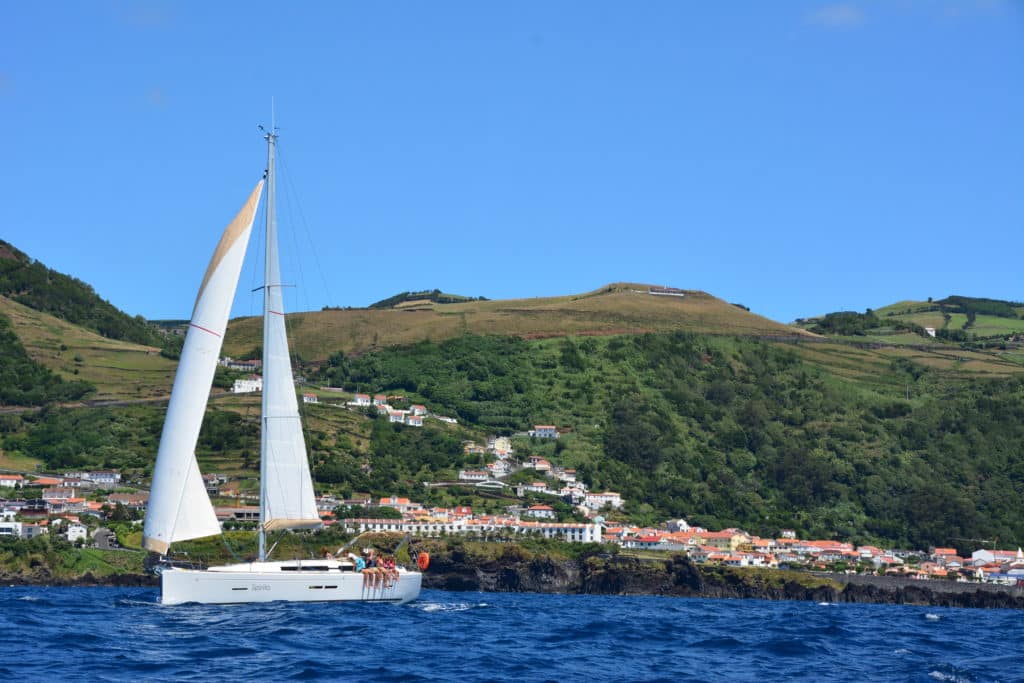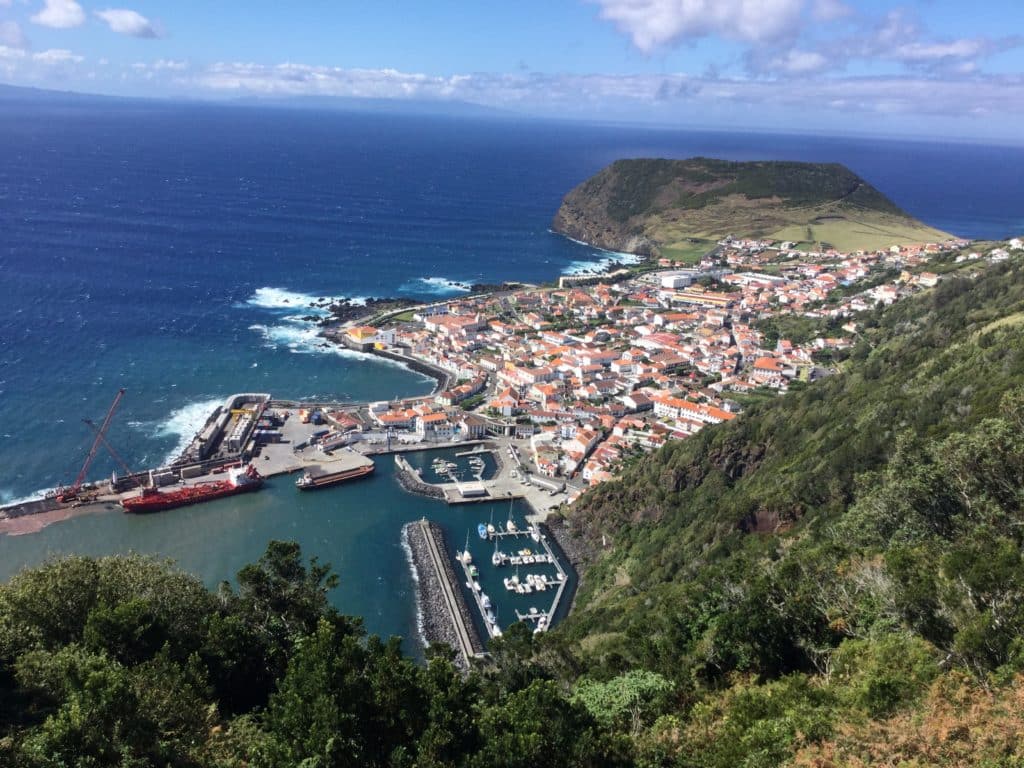
Cardoza. Silvia. DaCosta. Dutra. Mello. Borges. Growing up in Middletown, Rhode Island, back in the day, those were just a few of the names of kids I went to school with who shared a common ancestry: Their dads — and in many cases, their dads’ dads — were fishermen. Farmers. Landscapers. Boatbuilders. Mill workers. Masons. Family men. They’d come to America seeking the vast opportunities it presented, and they epitomized the title of that great old Rolling Stones tune, “Salt of the Earth.”
Dashing through their kitchens, on the way from one baseball or basketball game to another, the stories around the table of the “old country” were all about the Azores, their homeland, an archipelago of nine rugged islands in the middle of the Atlantic where it was said that if you jammed a stick into the ground, it would grow into a towering tree, so fertile and lush was the land. That was the sort of observation that would send my buddies’ eyes rolling skyward, but it sounded pretty magical to me, and even as a landlocked teenager, I always wanted to go there, to see for myself. Then, when I grew older and became an ocean sailor, the itch to visit became stronger still for a whole new set of reasons.
Over the years, of course, literally tens of thousands of intrepid voyagers have made landfall in the Azores, along with Bermuda, one of the true crossroads of the Atlantic Ocean. Perhaps the first Yankee yachtsman to call there — all by himself, naturally — was Capt. Joshua Slocum, who watched the islands rise from the mist after an 18-day voyage from Cape Sable, Nova Scotia, in summer 1895. If some of my friends’ parents had originally piqued my interest in the place, it was Slocum who turned my hazy curiosity into a bona-fide obsession.
“Early on the morning of July 20, I saw Pico looming above the clouds on the starboard bow,” wrote Slocum in his classic tome, Sailing Alone Around the World. “Lower lands burst forth as the sun burned away the morning fog, and island after island came into view. As I approached nearer, cultivated fields appeared, ‘and oh, how green the corn!’ Only those who have seen the Azores from the deck of a vessel realize the beauty of the midocean picture…
“It was the season for fruit when I arrived at the Azores,” he continued, “and there was soon more of all kinds of it put on board than I knew what to do with. Islanders are always the kindest people in the world, and I met none anywhere kinder than the good hearts of this place.”
After reading those passages, and speaking with other sailors who’d arrived in the Azores after a bluewater trip across the Atlantic, I reckoned and hoped that someday I would do the same. As it turned out, though, my very first glimpse of the isles came through the window of a puddle-jumping airplane inbound from Lisbon, the Azores being one of Portugal’s autonomous regions. And soon after, when we hoisted sail to wander in Slocum’s wake, it wasn’t aboard my own yacht on which we set forth. Nope, our party of four — including my longtime Newport sailing pals, Joy and Ian Scott, and my good ol’ Aussie mate, Carole — would be taking in the islands on a bareboat charter from a company called Sail Azores on their spiffy Dufour 460 Grand Large, Primo. Slocum probably would have been appalled.
Just for the record, Slocum’s Spray may well have had an easier time getting to the Azores than we did. First off, our overnight flight from Boston to Lisbon was delayed several times before being canceled altogether, which necessitated an overnight stay in an airport hotel. Then, on day two, another long delay in Beantown caused us to miss connections once in Portugal, which meant a second night in a hotel when we should’ve been aboard Primo and underway. By that time, we’d met several islanders in various airport lounges who assured us such travel nightmares to the Azores never happen (then again, they’d never flown with me, no stranger to such shenanigans). But as we soon learned, from a wind and weather standpoint, that missed day of what happened to be clear skies and favorable breeze threw a wrench in our itinerary from which we never truly recovered. In other words, we didn’t get to see everything we’d hoped to. That’s the downside of an ambitious weeklong charter.

On a much more positive note, from the moment we finally landed in Horta, on the island of Faial, we were bathed in the same sort of warmth and hospitality that had struck Slocum all those years ago, and which became a recurring theme of our entire trip. The Azoreans we met were inviting, wise and friendly folks, but most of all, they were extremely proud of the natural beauty and heritage of the unique island chain they call home, and were more than eager to show it all off.
We were greeted at the airport by the affable Nicolau Faria, who founded Sail Azores several years ago. Before that, a coastal cruise of the Azores was a strenuous affair, for there are few spots to anchor in the deep, rocky waters adjacent to the steep, volcanic islands, which is why most transiting bluewater sailors confined their brief visits to the protected harbor of Horta before proceeding on their merry ways. More recently, however, a series of modern marinas, nestled behind new breakwaters and complete with clean, excellent shoreside facilities and even free Wi-Fi, have been erected on most of the islands. Harbor-hopping between them — and taking some time ashore to enjoy their many attractions — is now relatively simple and straightforward for voyagers and charterers alike.
Once aboard Primo, we settled into the chart briefing with Anabela Costa and Filipe Goulart of the Sail Azores team. As she spread out the charts before us, Anabela said, “The best we have to offer is nature,” and began to point out some of the must-see destinations on our route.
As the islands span nearly 400 miles of blue Atlantic from west to east, it would be nearly impossible to visit them all in even a fortnight, particularly since the weather is nothing if not changeable. (That said, Sail Azores also offers two-week charters for extremely motivated and experienced sailors who don’t mind overnight passages with suggested itineraries that cover most of the isles.) So Anabela advised a tour of the group’s central islands: São Jorge, Pico, Terceira and Faial. Since we were down to five days after our airline escapades, even this seemed like a fairly bold plan, but we were anxious to give it a go.
It was too late in the day to shove off, so we wandered along the waterfront and took in the dozens of colorful paintings on the seawalls created by long-distance sailors passing through, an open-air gallery of sorts and a tradition among voyagers for which Horta is famous. Afterward, we wandered up the hill to the bright, fully stocked supermarket where we loaded up on local wine, beer, fruit, bread, meats, cheeses and other delicacies. Finally, after catching a cab back to town with our goodies, we enjoyed a terrific seafood dinner at the Genuíno Restaurant, named after its proprietor, Genuíno Madruga, Portugal’s first and only solo circumnavigator, a local celebrity who greeted us at the door like long-lost mates. Everyone told us we had to try the local lapas, or limpets, delicate clams on the half-shell broiled in garlic and butter; so we did, and they were delicious. So too was the fresh pargo, or sea bream, that followed. Wandering back to the boat, we were astounded by how affordable everything was. Two full carts of groceries had come to roughly 70 euros, or about $75 USD, which was nearly identical to our restaurant tab for dinner for four, complete with flowing wine and several beers.
I was up early the next morning for a long swim off the deserted beach on the outskirts of town, reportedly one of the few true beaches in the islands and the only one we’d see on our travels. The water, in the low 70s, was delightful, precisely the same temperature as back home in Newport on this late-September day. With that, there was nothing left to do but go sailing.








